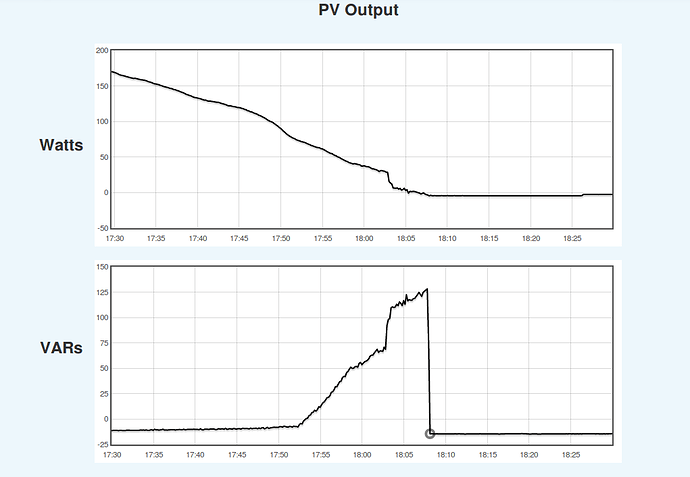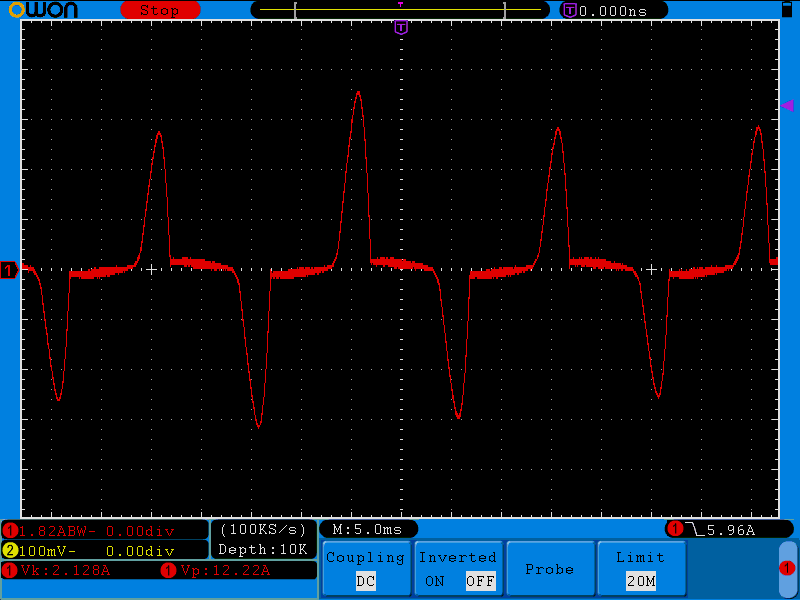Once upon a time, I started to tackle the problems created by the phase shifting in the transformers that we use to sense AC voltage and current. I read up on this forum and looked into what others had done both academically and practically. Most of the solutions I saw were based on trial and error calibration.
I got into a few discussions on this forum. What I got was a tongue lashing for not having an Electrical Engineering Degree, and as far as how to solve the problem, not even the time-of-day.
So I dug in and solved the problem. Along the way, I exposed the tools that I use to measure these things in the device I was building so others could do the same without additional equipment or specialized knowledge.
The problem that I came to understand was that the signals that are coming out of these transformers are not simply the input signals shifted by some constant number of degrees. They shift more and less over the duration of a single cycle. In fact, what happens with a voltage transformer is that it shifts a lot more while the slope is high (zero crossing), and a lot less while the slope is low (peak voltage). But most of the time, the real power is being developed during peak voltage when there is less shift.
I have an instruction manual that I got with my oscilloscope. It tells me how to measure phase shift using an elliptical pattern on the screen. I did that (after being warned that I was a fool and would blow myself and my equipment up - leave it to the professionals). I got a number. I could reproduce it. Pretty good.
So I pump that into my device and try to reconcile the power factor by shifting the voltage and data vectors by that angle. Hmmm. Doesn’t seem to work. After awhile, I climbed back outside the box.
If I feed the AC directly into my IoTaWatt - that’s right, no transformer, just a couple of resistors voltage divider - I have a true reference to the line. During this I banish the IoTaWatt to an isolated place, power it with a USB battery box, and talk to it via WiFi. But I digress. I’ve got an IoTaWatt with a direct line voltage reference and I connect a CT to it that is clamped to a unity-load on the AC line. Are you following me? Now I take 640 samples of AC and CT and compute the power factor. The arccosine of that power factor is the phase shift of the CT.
I do the same with a VT. I get a phase shift for the VT vs AC line. So now the big test. If I measure the power factor of the CT relative to the VT. Interestingly, it all seems to work out, at least pretty close.
As an example, I used a crappy VT that I measure with 5.0 degrees of shift vs the AC line.
I use an SCT013-000 on the AC line at about 3 amps and get 2.9 vs the AC line.
Then when I measure the CT vs the VT, I get -2.6
Line CT VT
0....................................2.9....................................5.0...........
Difference is -2.1.
So my method is .5 degrees off. That’s about as good as it gets in the IoTaWatt.
When I measure the VT phase shift with the traditional oscilloscope method, I get 7.5 degrees. That wouldn’t work in this application.
The API is there to read out the phase difference between any two inputs to an IoTaWatt. I’m working on a toolkit in the app that will make it as simple as pushing a button. These metrics work well and the result is reflected in the high accuracy of the IoTaWatt.


